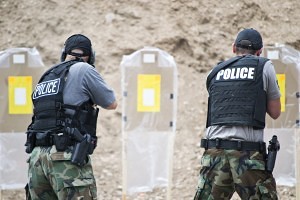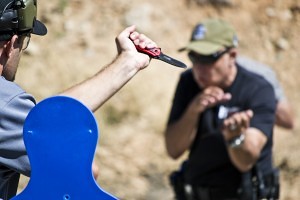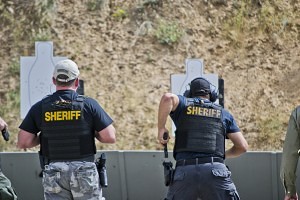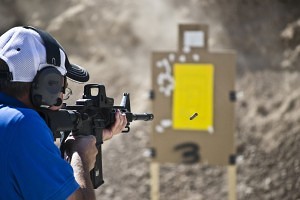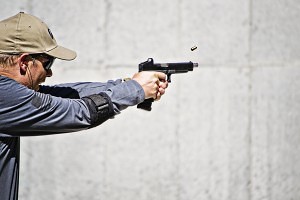Tag: law enforcement training
MATCH™ (MODULAR ARMORED TACTICAL COMBAT HOUSE)
Action Target’s Shoot House featuring Auto Target Hit Sense Technology.
Action Target’s MATCH™ is a 360°, live-fire, ballistically safe, shoot house designed for teaching and learning close quarter skills, like room clearing and hallway navigation, with realism and safety.
AutoTargets enhances training and the shooting experience. Each lift unit can be placed as a stand-alone target, or daisy-chained from a single air supply. Because AutoTargets is portable, it can be placed in any configuration or incorporated into any terrain. It is effective in shoot houses, Hogan’s alleys, and other close quarters combat environments, as well as open- eld, long distance training courses. A pressure sensitive target version is also available for use with non-lethal ammunition projectiles.
DUEL RUNNING MAN PRO
ACTION TARGET LAUNCHES THE DRM PRO,
DELIVERING AN ADVANCED RUNNING MAN TRAINING SYSTEM.
PROVO, Utah – September 26, 2016 – Action Target INC., the leading manufacturer of modern shooting ranges, is pleased to announce the launch of the Dual Running Man Pro, the most powerful and feature-rich running man system ever designed.
The DRM Pro boasts 3HP motors, ultra-wear resistant pulleys, speeds up to 20 fps, realistic acceleration, and an easy to use control interface for use on tablets and mobile phones. The DRM Pro uses two lateral traveling, non-turning target carriers capable of moving independently from one another because they are mounted on two separate tracks that run parallel to each other.
The DRM Pro includes industry leading technology, with added features such as built-in Wi-Fi, easy to use control interface that runs on a tablet or smart phone. The DRM Pro integrates with our range control software for advanced features and functionality. All components of the DRM Pro are IP54 compliant for year-round outdoor and indoor use. The DRM Pro is capable of traveling at variable speeds, up to 20 feet per second, which allows for a more advanced target acquisition training. The DRM Pro boasts high precision encoders to ensure target positions are accurate to within 6 inches. The modular ratcheting mechanism on the DRM Pro make cable tensioning quick and easy.
The DRM Pro is the perfect running man training system because it allows users to advance their training by having duel targets moving independent of one another. This allows trainers to designate one as a non-shoot and the other as a target. This will add stress and reality to training scenarios, allowing the user to develop and improve their decision making skills.
For more information about the DRM Pro or to purchase yours today, call 801-377-8033
What Makes a Professional Firearms Instructor?
By Dave Staskievicz
Editor’s Note: Action Target has republished this article in its entirety with the permission of the author. Ideas, comments, practices, recommendations, etc. are the author’s own and do not necessarily represent those of Action Target.
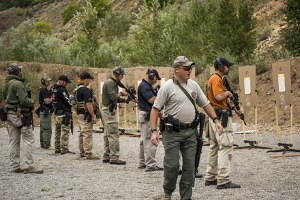
Depending on the type of firearms instructor you are, your answers might be a little different. Just so we are all on the same page, a few examples of different types of instructors I’m referring to are hunter safety, trap, range safety, NRA, competition, defensive shooting, and tactical (law enforcement / military – life and death).
There are a wide variety of training doctrines and techniques to choose from – I won’t talk about any of them. This article will focus on the different attributes that make up a professional firearms instructor.
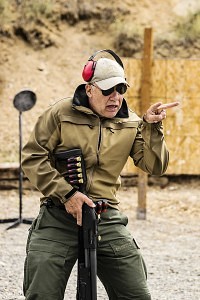
The majority of my experience as a firearms instructor comes from the LE / military arenas. However, I do occasionally help out with hunter safety and even coach some trap. Over the years, I have tried to listen and learn from many colleagues and instructors. One of the first lessons I learned was that I don’t know everything.
The first thing is to remember you can always learn something new. Never rest on your laurels, and always try to learn something that will make you a better instructor. Find a mentor or mentors and work on how you instruct. Every time I watch someone else teach, I’m trying to learn another way to communicate or relay information to the student. You can never stop learning and improving. I would never claim to be the best instructor, but looking back, I wasn’t a very strong instructor when I first started.
In my opinion, there are a few areas that make or break you as a good, professional instructor. I’m going to break down and discuss a few of these.
Professionalism
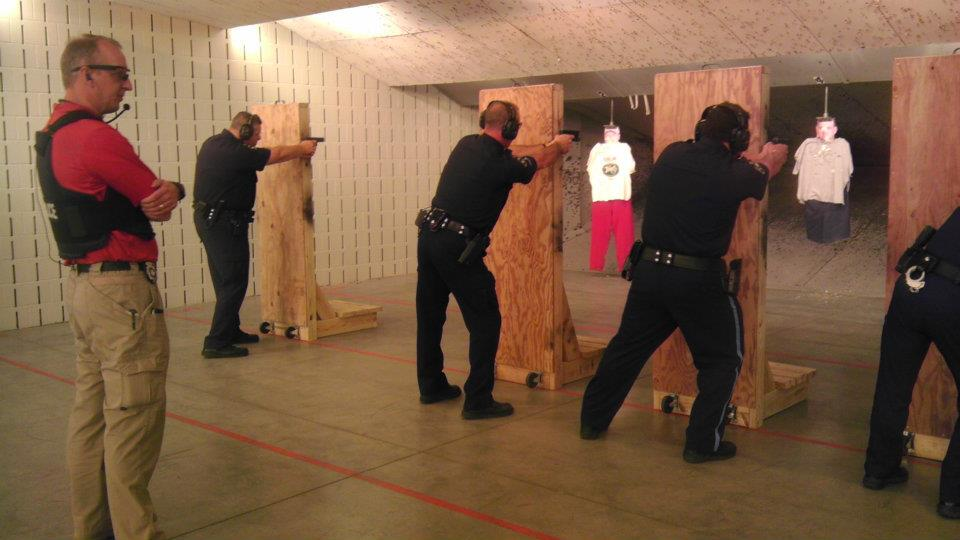
Professionalism also includes your documentation for the class. Every class needs a lesson plan and supporting documentation. Did you make a range safety plan and safety brief for your students and instructors? We can never afford to take safety for granted. Don’t cut corners or fall back on the “do what I say, not what I do” motto. Always set the example for your students.
Be courteous and respectful to your students and other instructors. Never bash another instructor or their techniques – that just shows that you are unprofessional. Never contradict another instructor in front of students unless it deals with an immediate safety issue. During a break, take the instructor aside and privately discuss any difference or suggestions.
Evaluate Yourself – Keep an Open Mind
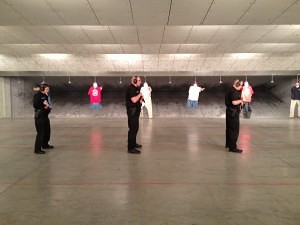
Just because an instructor has the most years of service behind his name, it doesn’t mean he is the best firearms instructor. This is especially true if there isn’t an open mind to progress and change.
Evaluate Techniques, Tactics, and Gear
This area is critically important, especially for defensive and tactical firearms instructors. Realizing we need to keep an open mind about ourselves, we also need to keep an open mind about our techniques, tactics, and gear. As we look at new tactics, we always have to remember that some look really cool on a flat, sterile range when the students’ heart rates are low. Always evaluate the validity of a new tactic or piece of gear before you introduce it into the classroom. Will the technique work when the student performs it with an elevated heart rate? Far too often, I’ve seen an instructor show students a “cool” technique that doesn’t pass the common sense test.
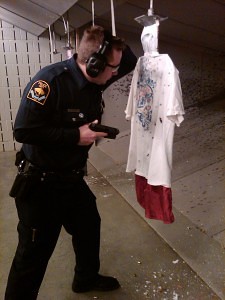
Think about this: if you’re with a group of instructors evaluating different techniques or gear and you’re always the one talking or you’re never wrong, you just figured out the issue – it’s YOU! If you run the training, you have to remember a good leader always depends on others to make you look good. Once you think you know everything, you are doomed. It’s impossible for one person to know everything, and if you think you do and you’re always right, you are the liability for your training program. Most of this comes down to leaving your ego at home. Remember, story time reduces training time.
As you update your curriculum, remember to have integrity. don’t take credit for other people’s work. Simply changing the name of a technique doesn’t make it yours, so don’t try to make a name for yourself that way. If you change the name of a technique, you will typically end up confusing your students anyway. This comes back to the ego again. The more you have to tell people how great you are, the more you are covering up your inabilities as an instructor or person.
Learning Environment
The most important thing a good firearms instructor can do is to help a student learn. Always remember, we must walk before we run. Breaking everything down into small tasks (modules) will go a long way to accomplish this goal.
- Explain what you are going to do
- Show them what you want them to do
- Demonstrate what you want them to do
- Have the student replicate what you want them to do in small parts (modules)
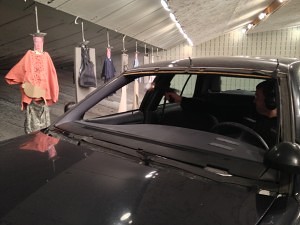
Students always need to have a positive learning experience. For example, when teaching some of the basic fundamentals of firearms, we need to understand why a student’s rounds are going to a certain location. A good instructor has learned how to break down the drills to help students learn why their rounds are always going to a certain place. Until a new instructor understands this, a simple shot analysis card can be an easy first step for learning.
Do I have all the answers? Absolutely not. If I ever thought I did, I would be a liability to myself and others around me. Remember, the purpose of this article is simply to get instructors to think about what a professional firearms instructor is and then take the time to evaluate themselves and their curriculum.
As for the idea of coming up with standards for firearms instructors, I don’t think it’s a very easy or feasible task. The biggest problem with this would be that there doesn’t seem to be a good clearinghouse to standardize a professional firearms instructor.
Remember, as firearms instructors, our goals need to revolve around providing the best possible real world learning environment for our students. Teaching a student to shoot a firearm has a great deal of liability surrounding it. Having students use what they have learned from you in defense of their lives or another person’s life is forever rewarding.
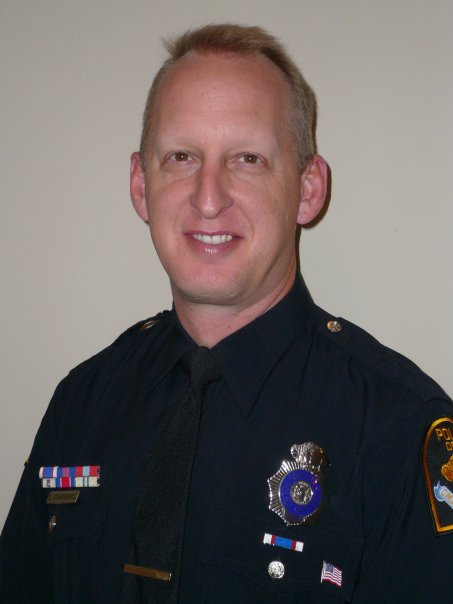
Officer Dave Staskiewicz is Range Master of the Omaha, Nebraska Police Department. He serves as the lead firearms instructor as well as the lead Taser instructor. Dave can be reached at dstaskiewicz@ci.omaha.ne.us.
LETC 2013: A Week of Advanced Firearms Training
With so many lives on the line, proper law enforcement firearms instruction is absolutely crucial to any police department’s ongoing training efforts. That is why Action Target has hosted its Advanced Law Enforcement Training Camp (LETC) for more than 20 years. This September, from the 9th to the 13th, marks another year as law enforcement departments from across the country and the world meet at Action Target’s headquarters for unparalleled advanced firearms training.
LETC is designed to aid department firearms instructors in their training effectiveness and skill – and to pass that on to officers in their own agencies. Classes are geared toward getting participants out of their comfort zones and pushing beyond their current skill levels. Past classes have enabled even the most experienced professionals to excel further and improve.
J.C. Boylan, Range Master from Maricopa County, Arizona, participated in LETC 2011. “The firearms training and range were excellent,” Boylan said. “I have been a firearms instructor since 1984 and trained with some outstanding trainers…I can say because of Action Target’s LETC, I became a better and more confident shooter as well as a better firearms instructor.”
Participants choose four eight-hour classes to attend from the 11 offered.
This year’s classes include:
- Advanced Practical Handgun
- Ultimate Shotgun
- Extreme Close Quarter Battle Tactics with Hands, Knife, and Pistol
- Rapid Deployment Patrol Rifle Operator
- Training for the Fight with the Pistol
- Emergency Medical Response for Firearms Instructors
- Shoot, Move, Communicate
- Glock Armorer’s Course
- Reactive Shooting
- Shoothouse Training – Instructor Training
- High Performance Handgun
Classes will be held both at Action Target headquarters in Provo, UT, and the Utah County Sheriff’s Office Thistle Firing Range – just a short drive up the canyon in Thistle, UT.
Action Target has selected some of the best firearms instructors in the industry including instructors from Safariland Shooting School, Hoffner’s Training Academy, Spartan Tactical Training Group, and others. These instructors offer decades of experience in firearms and tactical training.
“The intensity of the conference was welcomed, and it was a true privilege to be among the world’s best instructors in the business,” Detective Juan Lopez said. “The training was beyond thorough, [Action Target’s staff’s] hospitality was over the top, and this training was hands down the most bang for your buck. The detailed lesson plans helped me to document and remember what I learned at the conference so I can continue to develop my skills as well as pass this training on to our officers who were unable to go. This was nothing less than the ultimate training experience and every range instructor’s dream.”
A $500 tuition provides:
- Four eight-hour classes taught by world class firearms instructors (choose from selection of 11)
- Six meals (four lunches, BBQ dinner, and the closing banquet)
- LETC “Dirty Harry” competition
- LETC collectible T-shirt
- Official certificate of completion signed by instructors
- Collaboration with training professionals across the country
Attendees are required to bring their own weapons and ammunition. If the current ammunition shortage is preventing you from attending, please contact us as we may have a solution for you through Salt Lake Wholesale Sports for most common handgun and rifle calibers.
Registration is currently underway. Go to www.ActionTarget.com/calendar and follow the link under the “More Info” column for Sept. 9 – 13. Submission instructions are located at the bottom of the page. Contact Dallon Christensen at dallonc@actarg.com for any registration questions or concerns including ammunition needs. LETC is limited to the first 160 paid applicants, and classes are first-come first-served. Slots are filling up fast, so register today!
While primarily geared toward law enforcement firearms trainers, all law enforcement are invited to attend. Join us for a week of top-notch firearms training!
Keys to a Successful Shot
By George Harris
Much has been written about precision shooting in the world of combat skill development and pistol shooting in general. Perspectives and definitions of how and why we hit the intended target vary so greatly that two people involved in a heated discussion regarding precision shooting may be very parallel in their thinking, but they don’t recognize it. In this article, I will talk about how and why our views concerning this subject work. Ultimately, the goal is to bring us all a little closer in defining this controversial subject and understanding what we need to see in order to deliver a successful shot.
All of my training methods stem from simplicity in firearms training. I like to cut through all of the fluff, and present concepts that make sense and are easily reproducible by the average shooter. Most of us subscribe to the age old premise that most likely originated with the invention of firearms in that the objective of shooting is hitting your target.
Let’s start by discussing the two absolutes of hitting a target. They are muzzle management and trigger finger discipline. Since the bullet exits the muzzle on the way to the target, it seems likely that from zero to fifty yards (plus or minus), if the muzzle is pointed at the target when the bullet exits, then we will have ourselves a hit where we want it. Trigger finger discipline refers to how we release the bullet toward the target. If you stabilize the muzzle of the pistol on the target and operate the trigger without disturbing that stability, you will experience success. Make sense? My students think so!
Precision shooting is a total mystery to some simply because they are confused about what they must see to consistently hit the target. Sight alignment and sight picture are two regularly used terms in the precision shooting world, but they aren’t always fully understood. Sight alignment is nothing more than the front and rear sight as viewed by the eye. Perfect sight alignment is the front sight vertically and horizontally centered in the rear sight notch. Sight picture is the target, front sight and rear sight as viewed by the eye. Perfect sight picture is the front sight centered vertically and horizontally in the rear sight notch superimposed on the desired point of impact of the target.
In studying human vision, we find that the eye can clearly focus on a single plane, plus or minus an inch or two. Everything else ranges from a little to a lot out of focus. Relate this to a camera lens. The camera has clarity at its primary point of interest and everything closer or further away is less than perfectly clear. A little known fact is that the eye can pick the center of any object, regardless of its shape. It can do this without having total visual clarity of the object and can be accurate down to one minute of angle (a half inch circle at fifty yards).
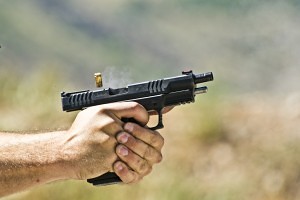
What this boils down to is that precision sight alignment will square the muzzle (where the bullet exits the gun) on the center of the target, which our eye automatically finds, for a hit in the desired location.
Bull’s-eye shooters that shoot the blank side of their target and shoot better groups than when they are shooting the target side prove the concept that the eye will naturally find the center of an object consistently. By keeping the eye focus on the sights through the release of the shot, the muzzle remains square with the target, and a consistent impact point is hit again and again.
A simple and extremely effective sight picture that we developed for the aged-eye shooters (those in bi-focals and tri-focals) has become the standard sight picture for all of our students who aren’t happy with their present method of hitting the target where they want to. We recommend a dot on the front sight and the widest notch available for the type of rear sight to be used. This allows us to use the eye’s natural ability to center round objects in square openings with incredible precision. We zero the pistol for the strike of the round to hit whatever we put the front sight dot on, just as we would a red dot sight system. The regimen is to center the dot in the rear sight notch and float the dot on the target. With a smooth trigger press to release the shot, the thrill of a center hit is felt again and again.
EDITOR’S NOTE: The views and opinions expressed in this article are those of the author and do not necessarily reflect the official position of Action Target as a company.
About George Harris
George Harris has spent his entire adult life working in the world of firearms. For over 30 years he has been a successful and motivational educator and trainer in all aspects of small arms. His simplistic approach to firearms training has an unarguable track record in extracting performance from his students of marksmanship, tactics, and maintenance.
As a business developer in the firearms field, George co-founded the world renowned SIG Sauer Academy and led it to become a profit center before retiring after twenty-one years of service.
George has the enviable record of leading industry test programs for multiple government and military agencies achieving successful results and contracts for firearms 100% of the time.
Many of his innovations and ideas in firearms design features have evolved to production firearms improving function, ergonomics, and aesthetics.
George has served as the subject matter expert involving firearms and related matters on television, radio, and in legal proceedings.
Among his personal accomplishments, George earned the coveted U.S. Army Distinguished badges for both Service Pistol and Service Rifle. He also coached and was a firing team member of the World Champion U.S. Army Reserve International Combat Team before retiring with 40 years of continuous Military Service.







